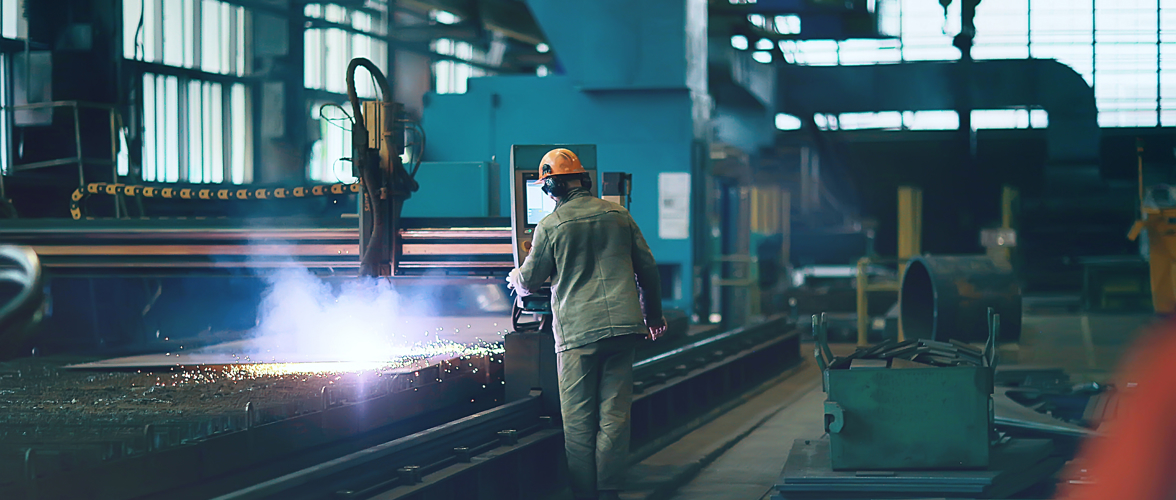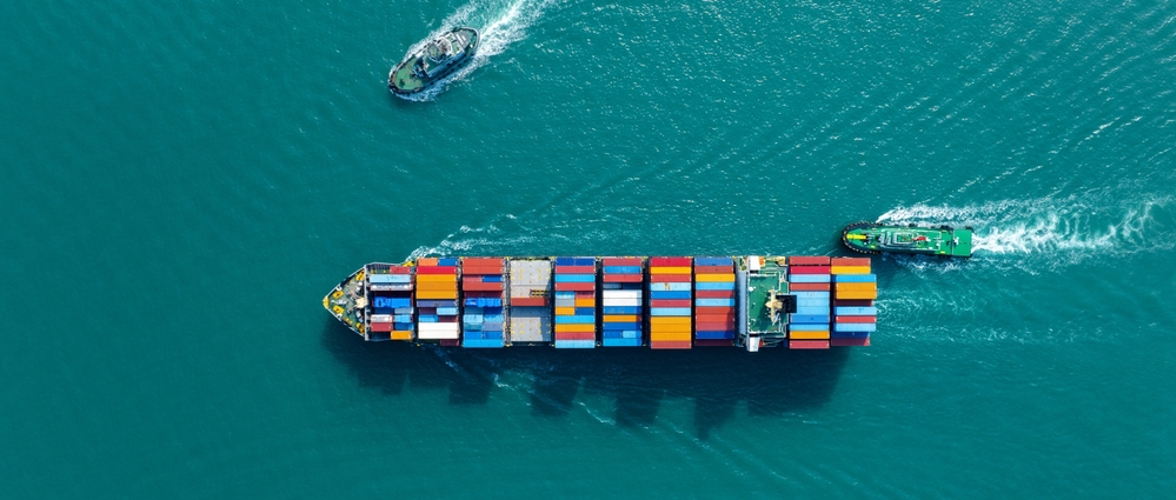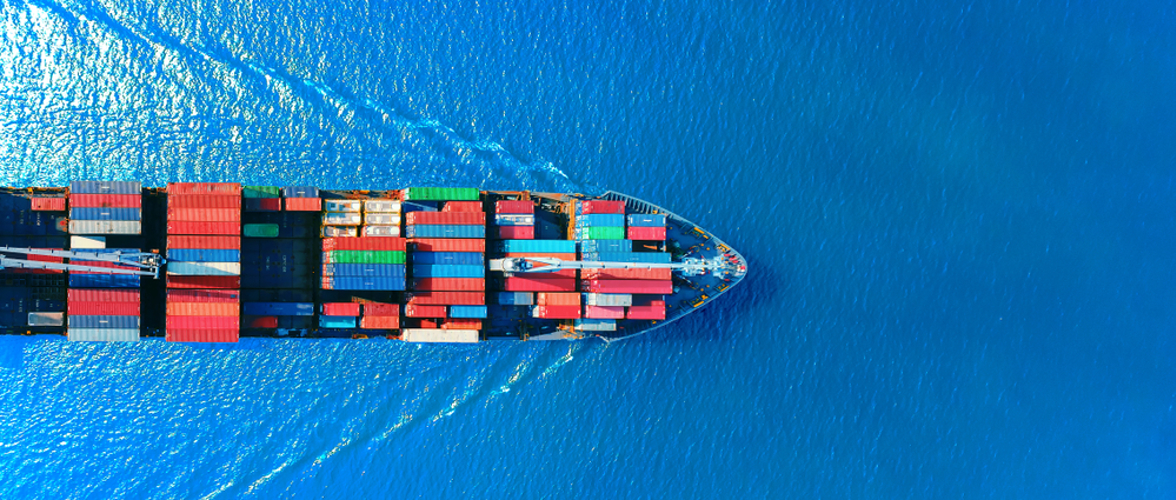The COVID-19 pandemic has brought on the largest disruption to container shipping since its inception 65 years ago, with the number of container ships stuck outside ports doubling to 353 in August 2021 according to logistics company Kuehne+Nagel.
The Harper Peterson and Co ship broker Harpex Container Ship Index, which is formed from container shipping rates across different classes of ships and serves as a measure of global shipping activity, reached 356,046 on 20 August 2021, up from 1,038 at the beginning of the year.
In the year through 20 August 2021, this marked a 59,570% increase, with spot freight price quotes increasing 10-fold in some cases. This has benefited the Sea and Coastal Freight Water Transport industry.
COVID-19 disruptions
Initially, the pandemic resulted in factories reducing output or temporarily closing. This led to a large number of containers being stopped at ports and to stabilise the cost of shipping rates, carriers reduced the number of vessels at sea. In addition to slowing imports and exports, this meant empty containers were not picked up.
As Asia was the first to be hit by the COVID-19 outbreak and also returned to normality earlier than other regions of the world, reduced workforces and lower output levels.
As China resumed exports sooner than other countries, the remaining containers in Asia were sent out to Europe and North America, but these were not returned soon enough. Pandemic-related workforce disruptions throughout North America and Europe significantly affected supply chain infrastructure, which, combined with the tightening of customs and border controls, resulted in the accumulation of containers throughout the supply chain.
In January 2021, North America faced a 40% container imbalance, according to Hilliebrand, a shipping services provider. This means that for every 100 containers arriving, just 40% were exported and 60% continued to accumulate.
Many manufacturers are facing a plethora of disruptions, in addition to high freight costs, which are all having a negative impact on the supply chain. Consequently, the IHS Markit UK Manufacturing PMI recorded significant input price inflation in July 2021, with nearly 72% of operators recording increases. This has had a knock-on effect, with output charges also rising, increasing at a near-identical pace to the record increase in June 2021.
Additionally, the UK Producer Price Index (PPI) has recorded month-on-month increases over the 10 months through July 2021. IHS Markit reported that the products most affected by the price increases were consumer, intermediate and investment goods.

Perfume and cosmetics
As a result of significant price hikes, many companies have resorted to passing along the additional cost to the consumer. Due to the vast range of products shipped across the globe with the current level of globalisation, many industries are feeling the impact of the container shortage.
In the Perfume and Cosmetics Manufacturing industry, the impact is expected to be strong. The proportion of industry revenue attributed to exports is 79.8%, with major player Unilever UK Ltd holding an estimated 15.4% share of the market. In the second quarter of 2021, Unilever announced prices increases of 1.6% in order to maintain profitability amid significant raw materials and transportation costs.
Unilever’s CFO has told reporters that prices for a range of goods will continue to rise, citing a 40%-50% surge in shipping costs.
Procter and Gamble, another consumer goods giant, reported that its gross margin was adversely affected by approximately US$200 million in freight costs for the year through May 2021. The company is consequently expected to increase prices by for consumer products by between 5% and 10%, depending on the brand.
Agricultural machinery
Farmers Weekly reported in June 2021 that the scale of prices increases recently was hard to believe, and that some manufacturers may even price themselves out of the market altogether. Although many companies in the Agricultural and Forestry Machinery Manufacturing have cited raw material costs as a driver of price increases, shipping costs are also expected to be significant as exports account for 73.5% of industry revenue.
In France, the largest agricultural manufacturer in Europe, a survey by industry association Axema found that 10% of respondents had already resorted to production halts or experienced order cancellations, while one manufacturer has reportedly imposed an 18% price increase. In the United Kingdom, metals machinery and equipment provided the second largest upwards contribution to the PPI over the year through July 2021, contributing 1.39 percentage points.
Retailers
Furniture and homeware retailers have also felt the impact of the container shortage, with many smaller retailers citing a significant increase in import costs from Asia, especially China. Speaking to the BBC, the founder of Houseof.com, which imports lighting from China, stated that the company is making a loss on these products as a result of the container shortage.
Some shipping lines are charging a premium when shipping to the UK as a result of severe delays and bottlenecks at UK ports, with the largest UK container port, Felixstowe, experiencing delays since October 2020.
Other suppliers have commented on the same problems, with another anonymous company telling the BBC that it may be forced to increase prices by up to 40% for some products.
According to data from the Office for National Statistics (ONS), furniture and household goods contributed 0.15 percentage points to the CPIH index in the year through July 2021, making this product group the second largest contributor after housing and household goods.
Clothing retailers have also felt the brunt of the container shortage, with J&B Clothing Company Ltd, a Hong Kong-based garment manufacturer that serves UK fashion sites such as Pretty Little Thing, stating the company could not continue to sustain absorbing the inflated shipping rates and would have to resort to passing on the cost.
Consumer Price Index (CPI) data shows that clothing prices were a driving force behind the monthly inflation increase of 0.5% in May 2021, where clothing and footwear contributed 0.13 percentage points, followed by 0.05 percentage points in June 2021, when inflation rose by 0.4%.
Producers have also suffered somewhat from clothing, textile and leather prices, which prod contributed 0.5 percentage points to the PPI index in July 2021, registering an overall increase of 1.7 percentage points in the year through July 2021.
Although the contribution from clothing and footwear to the CPI has declined since June 2021 in line with the summer sales season, inflationary pressures are forecast to intensify over the coming months, as inflation could rise to more than 4% during 2021, according to the Resolution Foundation, a thinktank who investigate living standards.
On the horizon
The US inflation rate was over double that of the UK over the year through July 2021, reaching 5.4% in July. Some economists, such as Ruth Gregory at Capital Economics and the Resolution Foundation, feel UK inflation may continue to rise as the continuation of stretched supply chains and delays at ports remain ongoing, pushing inflation to as much as 4%.
If the container shortage and other supply chain disruptions continue to persist, it is likely that UK inflation will continue to soar, with the Bank of England predicting it may peak at around 3% in late 2021.
Nonetheless, this is expected to be temporary, with Maersk, a major shipping line, stating that once bottlenecks are relieved and buying patterns normalise alongside additional containers and vessels entering the market, supply chains will recover. However, this is not expected to be a quick fix, with ING stating that input shortages are expected to continue into 2022 and container prices may even remain elevated into 2023.
Such a long recovery period is forecast by experts for a number of reasons. Firstly, demand levels are forecast to remain high in the short to medium term, keeping demand for shipping containers high. This, combined with a shortage of shipping containers and significant congestion at ports is expected to continue to cause disruptions to the overstretch global supply chains, according to Rachel Premack, a journalist at Business Insiders who has reported extensively on the crisis. She also stated that many people believe that demand will continually decrease as more countries and regions return to more normality, allowing ports to work through the backlog of containers and begin to correct the imbalance of shipping containers globally.
For more information on any of the UK’s 500+ industries, log on to www.ibisworld.com, or follow IBISWorld on LinkedIn and IBISWorldUK on Twitter.









